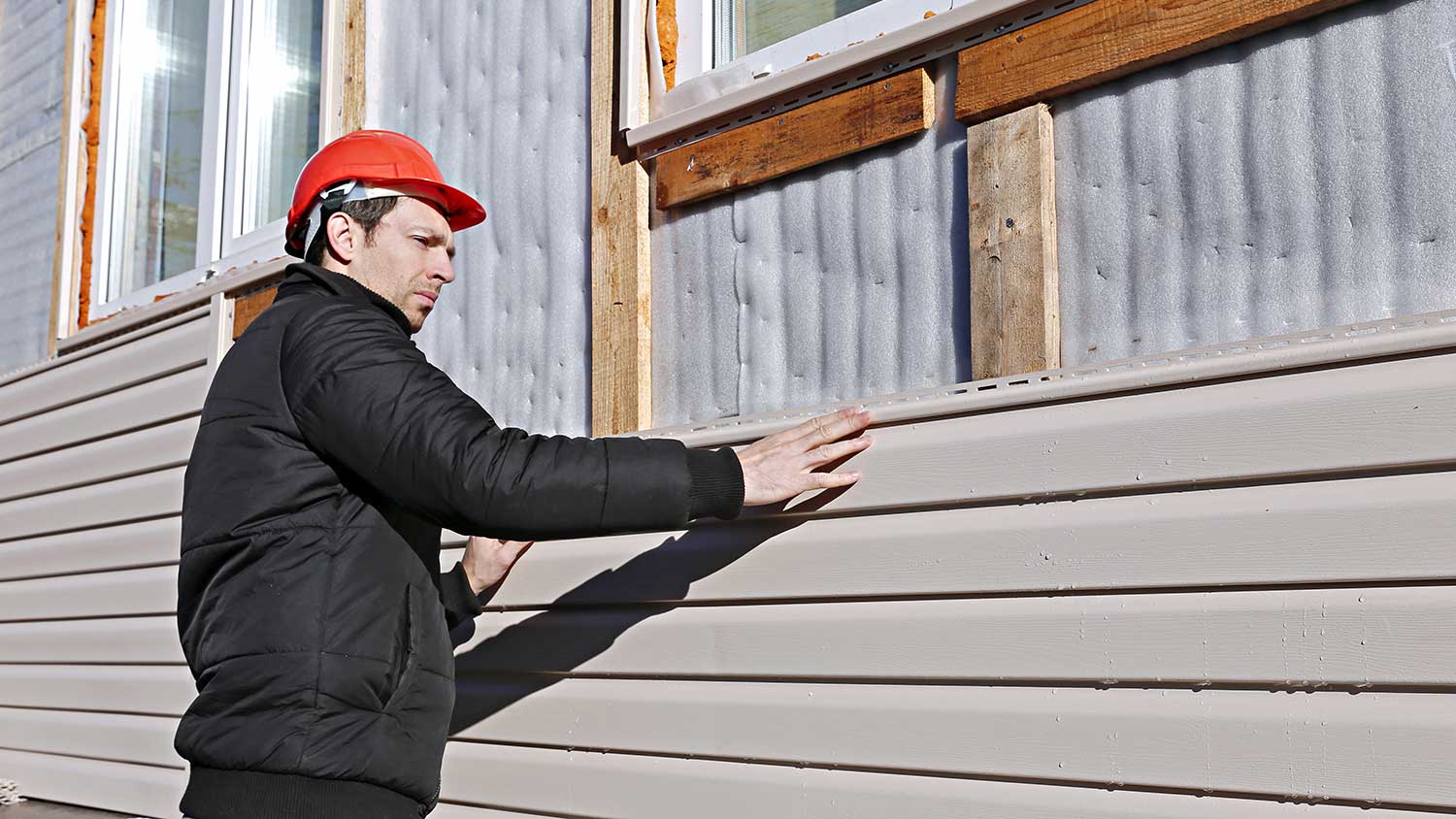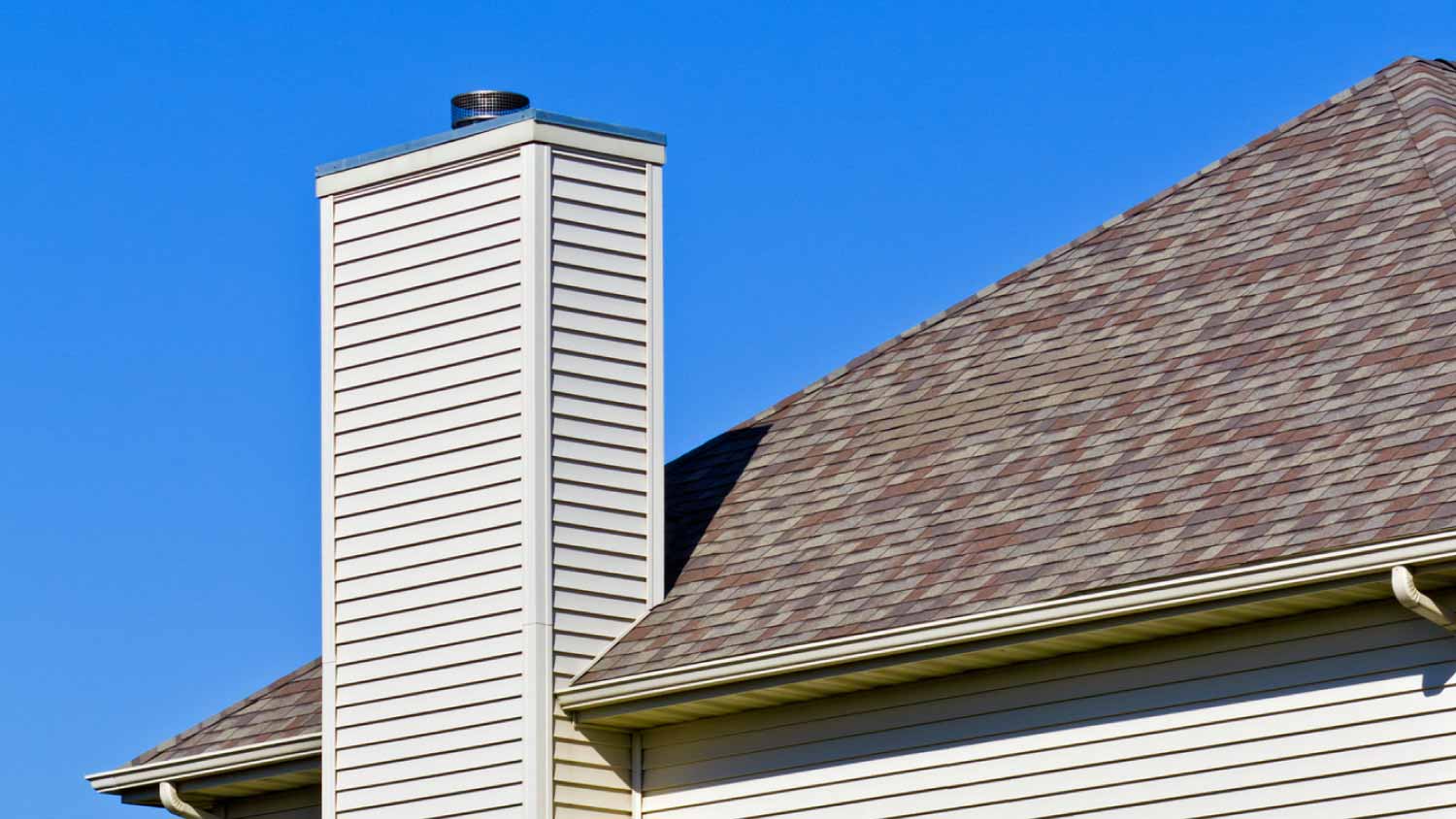
Budget for the cost to replace siding based on factors such as home size, siding type, materials, labor, removal, permits, and more.
Board and batten siding costs an average of $10,600


Board and batten siding costs an average of $8,500 and $27,300 or $10,600 for most projects.
Expect to pay between $2.50 and $12.50 per square foot for board and batten siding once materials and labor are combined.
Size, design complexity, and installation method significantly impact final costs.
Periodic sealing and maintenance help prevent water damage and preserve structural integrity.
Board and batten siding offers strong curb appeal and potential return on investment (ROI) benefits.
This article was updated using automation technology and thoroughly reviewed for accuracy by HomeAdvisor Editor Ryan Noonan.
Board and batten siding costs $2.50 to $12.50 per square foot. This translates into average installation costs ranging between $8,500 and $27,300 with an average total of $10,600 for most homeowners. Your exact price for board and batten siding depends on the size of your home, labor, repairs, and the material you choose. Factor in routine siding sealing and maintenance when budgeting, so you aren’t surprised by future costs.
Several key factors—your home’s size, the project’s complexity, and local labor rates—drive what you’ll finally pay for board and batten siding.
The size of your home is one of the main cost drivers for board and batten siding projects. The larger the home, the more materials and labor are involved, and vice versa. Likewise, board and batten projects cost more for homes with multiple stories, since contractors may need to employ scaffolding or a larger team.
If your exterior features numerous angles, dormers, or non-standard windows, expect higher costs. Every angle means more custom cuts, extra material waste, and additional labor hours.
Material boards cost between $0.75 and $10 or more per square foot. Including labor, installing board and batten siding averages $2.50 to $12.50 per square foot.
| Square Footage | Average Cost Range |
|---|---|
| 1,000 | $1,000–$13,500 |
| 1,500 | $1,500–$20,250 |
| 2,000 | $2,000–$27,000 |
| 2,500 | $2,500–$33,750 |
| 3,000 | $3,000–$40,500 |
There are three main methods for installing board and batten siding:
New installation: Applying board and batten siding to a prepared substrate on a new build, such as sheathing or studs.
Replacement: Removing old siding and residing your home.
Overlay: Installing new board and batten siding directly over the existing siding.
A new installation is the simplest because the sheathing is in good shape and there’s no old siding to haul away. Replacement adds demo, disposal, and any hidden repairs under the old boards. An overlay costs the least up front, but you lose the chance to fix hidden damage or upgrade insulation.
Labor alone costs $1.75 to $2.25 per square foot for board and batten siding installation. Pros often bundle this with permit fees, yet that bottom line can climb if your project is tricky or hard to access.
Additional services may be billed separately, such as:
Siding painting
Staining
Sealing
Potential repairs, upkeep, insulation upgrades, and other add-ons contribute to total batten board siding installation costs.
Repairing existing siding costs $360 to $1,480, or $910 on average, depending on what’s damaged and how severe it is.
When replacing new siding, it’s important to ensure the underlying structure is in good condition. If you’re replacing existing siding that’s suffered water damage or similar problems, the framing, sheathing, and other structural components may also reveal related damage. Some homeowners also take new siding installations as an opportunity to make framing adjustments.
Removing existing siding may reveal hazardous materials that, according to most building codes, must be addressed before your installation can proceed. Older homes may have disturbed asbestos behind siding. Hiring a professional is essential for these concerns since they have the appropriate safety skills and equipment.
Left unaddressed, this damage allows water behind your siding and causes rot and mold growth.
Plan to reseal the boards every two years. A fresh coat keeps moisture and UV rays from sneaking behind the battens and shortens the odds of rot.
Siding offers insulating qualities, but external insulation beneath the siding offers superior comfort and energy efficiency. As such, many homeowners replace their insulation at the same time as their board and batten siding to maximize cost-effectiveness.
Most board and batten materials cost between $0.75 and $10 per square foot. Premium materials, such as high-quality or specialty wood, can cost $21 per square foot . Lower-quality materials cost less to purchase, but they may be less durable than high-end options and require more upkeep.
High-end materials often come with superior durability and longevity, although replacing small sections through the siding’s lifetime will likely cost more than lower-end materials.
Cedar board and batten siding ranges between $2.80 and $3 per square foot. Cedar’s warm looks and simple installation make it a popular siding option. The material is also easy to stain, naturally resistant to insects and warping, and has more budget-friendly pricing compared to other wood.
Cypress wood siding averages between $4 and $21 per square foot. This type of siding is known for its natural resistance to weather and insects, longevity, and ease of use, but these qualities often reflect high demand and costs for cypress.
Popular for its aesthetic appeal and long lifespan, wood siding costs between $3 and $10 per square foot and is an easy material to work with, allowing for a seamless fit to the shape of your home. Most types of wood require regular upkeep to avoid rot, discoloration, and peeling paint. In addition to cedar and cypress, pine, redwood, and fir are popular choices.
Fiber cement siding costs $0.75 to $5 per square foot. This material is a mixture of sand, cement, and wood cellulose. It's strong, durable, and low maintenance, but heavy and difficult to install. Contractors utilize specialized tools and skills to work with fiber-cement. Some installations require additional structural support to prevent excessive strain on your home’s framing.
Additionally, Hardie board siding—a popular brand—costs between $5 and $15 per square foot. Hardie Board may offer superior appeal and durability.
Metal siding options, including aluminum, cost between $3 and $8 per square foot. Aluminum’s low maintenance makes it a popular budget-friendly choice, but it’s prone to dents and difficult to paint. It may require periodic sealing and maintenance to prevent and remediate rust.
Compared to aluminum, steel carries a higher price due to its durability and greater resistance to denting and warping. Steel also requires regular upkeep to prevent corrosion.
Vinyl siding costs $2 to $7 per square foot and is lightweight, easy to install, and available in a variety of colors and finishes. Many manufacturers mold their siding to resemble wood. Vinyl board and batten lasts 30 years or more.
Engineered woodboard and batten siding costs between $2 and $5.50 per square foot. This type of siding is made from wood chips and a bonding agent. Affordability, simple installation, and durability make it a popular option among homeowners.
Return on investment (ROI) isn’t guaranteed, but many homeowners see a value bump, especially when they spring for higher-quality materials. Board and batten siding replacements for deteriorated, damaged, or outdated siding offer the best return, up to 85%. Board and batten offers versatile curb appeal, durability, low maintenance, and energy efficiency that appeals to potential homebuyers.
Keep your board and batten project on budget with these simple tactics:
Choose siding materials that balance affordability with aesthetic appeal and functionality.
Get multiple contractor estimates from local siding companies, review included services and rates, and negotiate costs if possible.
Research tax rebates and other incentives for installing energy-efficient siding.
Limit high-end finishes and complicated designs that add cost without proportionate return potential.
No place is more important than your home, which is why HomeAdvisor connects homeowners with local pros to transform their houses into homes they love. To help homeowners prepare for their next project, HomeAdvisor provides readers with accurate cost data and follows strict editorial guidelines. After a project is complete, we survey real customers about the costs to develop the pricing data you see, so you can make the best decisions for you and your home. We pair this data with research from reputable sources, including the U.S. Bureau of Labor Statistics, academic journals, market studies, and interviews with industry experts—all to ensure our prices reflect real-world projects.
From average costs to expert advice, get all the answers you need to get your job done.

Budget for the cost to replace siding based on factors such as home size, siding type, materials, labor, removal, permits, and more.

Find out who installs siding and who to call. Learn when to hire siding contractors or general contractors, plus steps, safety, and costs

Who replaces chimney siding? Learn who to call, why siding contractors are best, what to expect, and average costs.

How much siding do you need to cover your home's exterior? Figure it out with our siding calculator.

Budget for siding repair costs based on factors such as home size, damage severity, labor rates, materials, removal, potential hazardous material, and more.